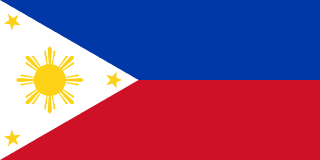Introduction

How is the Military in Philippines and how does it work to maintain Sucity and fight terrorism? In terms of Military and security forces, we have the Armed Forces of the Philippines (AFP): Army, Navy (includes Marine Corps), Air Force
Department of Transportation: Philippine Coast Guard (PCG); Department of the Interior: Philippine National Police Force (PNP) (2025).
Department of Transportation: Philippine Coast Guard (PCG); Department of the Interior: Philippine National Police Force (PNP) (2025).
In Philippines, the Armed Forces of the Philippines (AFP) are responsible for territorial defense and assisting with internal security; much of the AFP's operational focus is on internal security alongside the Philippines National Police, particularly in the south, where several separatist insurgent, terrorist, and criminal groups operate and a considerable portion of the AFP is typically deployed; additional combat operations are conducted against the Communist People’s Party/New People’s Army, which is active mostly on Luzon, as well as the Visayas and areas of Mindanao; prior to a peace deal in 2014, the AFP fought a decades-long conflict against the Moro Islamic Liberation Front (MILF), a separatist organization based mostly on the island of Mindanao, which had up to 40,000 fighters under arms
maritime security is also a priority; the AFP's naval forces conduct naval interdiction missions in support of security operations on the southern islands, including joint maritime patrols with Indonesia and Malaysia; rising tensions with China over disputed waters and land features in the South China Sea since 2012 have spurred the AFP to place more emphasis on blue-water naval capabilities, including acquiring larger warships such as guided missile frigates, corvettes, offshore patrol vessels, and landing platform dock (LPD) amphibious assault ships
the Philippine military was formally organized during the American colonial period as the Philippine Army; they were established by the National Defense Act of 1935 and comprised of both Filipinos and Americans; the US and Philippines agreed to a mutual defense treaty in 1951; based on agreements signed in 2014 and 2023, the Philippine Government allows the rotational presence of US military forces, aircraft, and ships at up to nine bases in the Philippines; also in 2023, the US agreed to assist in modernizing Philippine defense capabilities, deepen interoperability, enhance bilateral planning and information-sharing, and combat transnational and nonconventional threats (2025)
maritime security is also a priority; the AFP's naval forces conduct naval interdiction missions in support of security operations on the southern islands, including joint maritime patrols with Indonesia and Malaysia; rising tensions with China over disputed waters and land features in the South China Sea since 2012 have spurred the AFP to place more emphasis on blue-water naval capabilities, including acquiring larger warships such as guided missile frigates, corvettes, offshore patrol vessels, and landing platform dock (LPD) amphibious assault ships
the Philippine military was formally organized during the American colonial period as the Philippine Army; they were established by the National Defense Act of 1935 and comprised of both Filipinos and Americans; the US and Philippines agreed to a mutual defense treaty in 1951; based on agreements signed in 2014 and 2023, the Philippine Government allows the rotational presence of US military forces, aircraft, and ships at up to nine bases in the Philippines; also in 2023, the US agreed to assist in modernizing Philippine defense capabilities, deepen interoperability, enhance bilateral planning and information-sharing, and combat transnational and nonconventional threats (2025)
Security and military information of Philippines
| Military and security service personnel strengths | approximately 145,000 active Armed Forces (105,000 Army; 25,000 Navy, including about 8,000 Marine Corps; 15,000 Air Force) (2025) |
|---|---|
| Military equipment inventories and acquisitions | the AFP is equipped with a wide mix of imported weapons systems; in recent years, it has received equipment from more than a dozen countries, including Israel, South Korea, and the US (2024) |
| Military service age and obligation | some small variations in age based on the branch, but generally 18-27 years of age for voluntary military service for men and women; no conscription (2025). note: as of 2023, women made up about 8% of the active military; women have attended the Philippine Military Academy and trained as combat soldiers since 1993 |
| Military deployments | . |
| Military expenditures | |
| Military Expenditures 2024 | 1.7% of GDP (2024 est.) |
| Military Expenditures 2023 | 1.5% of GDP (2023 est.) |
| Military Expenditures 2022 | 1.4% of GDP (2022 est.) |
| Military Expenditures 2021 | 1.2% of GDP (2021 est.) |
| Military Expenditures 2020 | 1.1% of GDP (2020 est.) |
Terrorism
In Philippines, the different Terrorist group(s) inlcude: Abu Sayyaf Group; Communist Party of the Philippines/New People's Army (CPP/NPA); Islamic State of Iraq and ash-Sham – East Asia (ISIS-EA) in the Philippines
All Important Facts about Philippines
Want to know more about Philippines? Check all different factbooks for Philippines below.
-
 Philippines Factbook
Philippines Factbook
-
 The Economy of Philippines
The Economy of Philippines
-
 Learn about the Government of Philippines
Learn about the Government of Philippines
-
 Communication in Philippines
Communication in Philippines
-
 Popular Universities in Philippines
Popular Universities in Philippines
-
 Enerny in Philippines
Enerny in Philippines
-
 Transport in Philippines
Transport in Philippines
-
 The Geography and society of Philippines
The Geography and society of Philippines
-
 The Environment of Philippines
The Environment of Philippines
-
 Military and security in Philippines
Military and security in Philippines